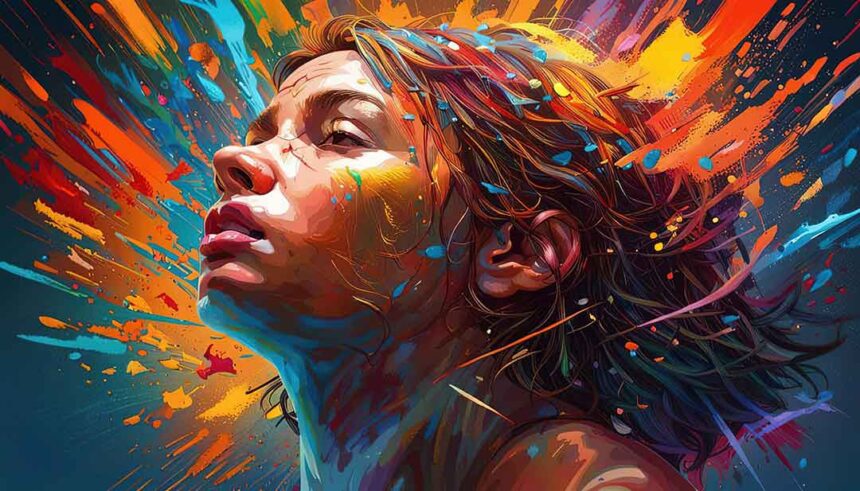Introduction
In the realm of art, innovation has always been a driving force, pushing boundaries and challenging conventions. With the advent of artificial intelligence (AI), the landscape of art creation has undergone a significant transformation. One of the most intriguing developments in this sphere is the emergence of AI art generators. These tools, often available for free online, harness the power of machine learning algorithms to generate unique and captivating artworks. In this blog post, we will explore the impact of AI art generators on contemporary art movements and trends, delving into their implications for artists, audiences, and the art world at large.
The Rise of AI Art Generators
In recent years, AI art generators have proliferated, offering artists and enthusiasts alike access to cutting-edge technology for creative expression. Powered by sophisticated algorithms, these tools can generate a wide array of artistic styles, from abstract compositions to hyper-realistic portraits. What sets AI art generators apart is their ability to learn from vast datasets of existing artwork, allowing them to mimic artistic techniques and produce compelling visual content autonomously.
AI art generator free tools are now readily available online, empowering artists and enthusiasts to explore their creativity without financial barriers. These tools utilize artificial intelligence algorithms to produce a diverse range of artworks, from abstract compositions to photorealistic portraits. Whether you’re a seasoned artist seeking new techniques or a novice eager to delve into digital art, AI art generator free options offer an accessible platform for unleashing your imagination and creating captivating visual content.
The accessibility of AI art generators, many of which are available for free online, has democratized the creative process, enabling individuals with varying levels of artistic skill to experiment with digital art creation. Moreover, these tools often come equipped with features such as background removers, simplifying the composition process and empowering users to focus on the creative aspect of art-making.
Impact on Contemporary Art Movements
The emergence of AI art generators has had a profound impact on contemporary art movements, sparking new forms of artistic expression and blurring the boundaries between traditional and digital art. One notable trend is the fusion of AI-generated imagery with other artistic mediums, such as painting, sculpture, and installation art. Artists are increasingly integrating AI-generated elements into their work, creating hybrid pieces that challenge conventional notions of authorship and creativity.
Furthermore, AI art generators have facilitated collaborations between humans and machines, giving rise to a new genre of collaborative art-making. Artists are partnering with AI algorithms to co-create artworks, exploring the intersection of technology and creativity in novel ways. This collaborative approach not only expands the creative possibilities but also raises intriguing questions about the nature of artistic authorship and the role of the artist in the digital age.
Democratization of Artistic Expression
The accessibility of AI art generators has democratized artistic expression, breaking down barriers to entry and empowering individuals from diverse backgrounds to engage with the creative process. Unlike traditional art forms that require specialized skills and training, AI art generators offer a user-friendly interface that allows anyone to create art with ease. Whether you’re a seasoned artist or a novice enthusiast, these tools provide a platform for experimentation and self-expression.
Moreover, the availability of AI art generators for free online has democratized access to art-making tools, making them accessible to individuals who may not have the financial means to invest in expensive art supplies or software. This democratization of art creation has the potential to diversify the art world, amplifying voices that have traditionally been marginalized and fostering greater inclusivity within artistic communities.
Challenges and Ethical Considerations
While the proliferation of AI art generators has opened up new possibilities for artistic expression, it also raises important ethical considerations. One concern is the potential for plagiarism and copyright infringement, as AI algorithms trained on existing artwork may inadvertently reproduce copyrighted material. Additionally, questions have been raised about the role of the artist in the age of AI, with some critics arguing that AI-generated art lacks the human touch and emotional depth of traditional artwork.
Furthermore, the reliance on AI art generators could lead to homogenization of artistic styles, as artists may be tempted to rely on pre-existing algorithms rather than developing their own unique voice and aesthetic. This commodification of creativity threatens to undermine the diversity and richness of the art world, reinforcing dominant cultural narratives and stifling innovation.
Looking to the Future
Despite these challenges, the future of AI art generators appears promising, with continued advancements in machine learning technology poised to push the boundaries of creative expression even further. As AI algorithms become more sophisticated and capable of emulating human artistic techniques, we can expect to see an evolution in the relationship between humans and machines in the realm of art.
Moreover, the democratization of art-making tools has the potential to democratize access to art appreciation, fostering greater cultural participation and engagement. By harnessing the power of AI art generators, artists and enthusiasts alike can explore new frontiers of creativity, pushing the boundaries of what is possible in the world of art.
In conclusion, the influence of AI art generators on contemporary art movements and trends cannot be overstated. These tools have revolutionized the creative process, democratizing artistic expression and blurring the lines between human and machine creativity. While challenges and ethical considerations persist, the future of AI-generated art is bright, offering endless possibilities for innovation and exploration in the ever-evolving landscape of contemporary art.






